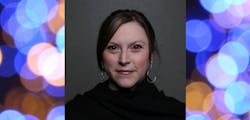As we chase the tail end of 2019, we look at many items from this year’s run of LED and solid-state lighting (SSL) content to see what resonated with readers. I was confident that horticultural lighting topics would pop up in the top 5 due to the great guest contributions delivered, and that the response to connected lighting and human-centric lighting design entries would be apparent. Let’s just see what made the cut.
1. Balance taste, nutrition, and crop yield with UV light exposure
In August, senior plant scientist Elsebeth Kolmos outlined current findings on how crops respond to ultraviolet (UV) light exposure. Summarizing some conclusions on the impact of various spectra, Kolmos also provided a succinct explanation of the mechanisms of UV light sensing in plants and described how these characteristics might be leveraged in controlled environment agriculture (CEA) using carefully designed LED-based horticultural lighting. Kolmos only recently joined the Lighting Enabled Systems & Applications (LESA) Center at Rensselaer Polytechnic Institute, so we were pleased that she was able to spend some time debriefing our audience on the potential of UV light in horticulture.
2. Is anyone talking about Power over Ethernet these days?
Sometimes we get schooled, too, when we explore questions that come up in team discussions, such as the mild debate that ensued about whether Power over Ethernet (PoE) has missed its Big Bang moment in lighting. Wow, though, because after publishing the blog and reaching out to the audience, I was surprised to see some truly polarizing responses. I have already mentioned that we will be working those comments into an upcoming article. You can expect to see that in early 2020, and we are looking at other potential contributions on the position of PoE in the connected lighting market, integration challenges, and case studies.
3. Science advances toward a greater understanding of plant responses to light
In case you missed it, researcher Neil Mattson of the Greenhouse Lighting and Systems Engineering (GLASE) consortium at Cornell University previewed his HortiCann Light + Tech keynote in a guest blog this September. Mattson’s contribution was set apart from others by his viewpoint of the plant scientist as an advocate “for LED manufacturers to invest the time and money it takes to truly understand how plants will respond to these myriad of lighting regimes rather than take an ‘if we build it, the farmer will use it’ approach.” He considered the entire greenhouse systems approach and has conducted experiments into the effects of light and CO2 on cultivars in multiple combinations, noting that the next step is to follow the data on a commercial scale to aid in developing SSL products that are optimized for lower energy consumption and improved light usage for plants.
4. Exploring the effects of pulsed lighting application in controlled environmental agriculture
LESA’s plant science team was temporarily enhanced with the expertise of visiting scholar Jurga Miliauskiene, whose research interest rested on pulsed-light application in CEA. Looking at the most recent published studies, she raises the question of whether pulsed light of specific wavelengths at different periods will achieve at least the same crop yield and quality as continuous LED lighting — and maybe there will even be measurable improvement in quality. Miliauskiene participated in pulsed-light studies using LESA-developed technology known as the TIGER light module, and there is more to be learned. The possibilities are compelling, because a grower operation could use considerably less energy and waste fewer photons if this research is developed into additional commercial SSL systems.
5. Is lighting the next phase of grading your workplace?
Finally, a relatively recent blog I wrote about the shift in attention to more human-centric lighting design principles in the commercial workplace marked its place on our top blogs list. Although I know that some people truly despise the term “human-centric” (see one of our top health and wellbeing articles that raises a potential new buzzword), right now it is a more encompassing term for light that is designed to support visual acuity and comfort while promoting health and wellbeing, potentially with positive impact on circadian rhythms, mood/behavior, alertness, and/or productivity. As we added the topic of Lighting for Health and Wellbeing to our newsletter lineup, website topics, and conference agendas, you know that we believe this SSL segment is growing as a valuable prospect for the lighting industry to prove its technology chops, further remove itself from the commodity manufacturing concept, and generate more collaborative opportunities with the R&D community.
Thanks for reading our blogs, and please don’t hesitate to reach out to me for potential guest contributions. Check out our editorial guidelines for details on our audience and proposals. Coming next week is our annual top 20 articles round-up. Stay tuned!






